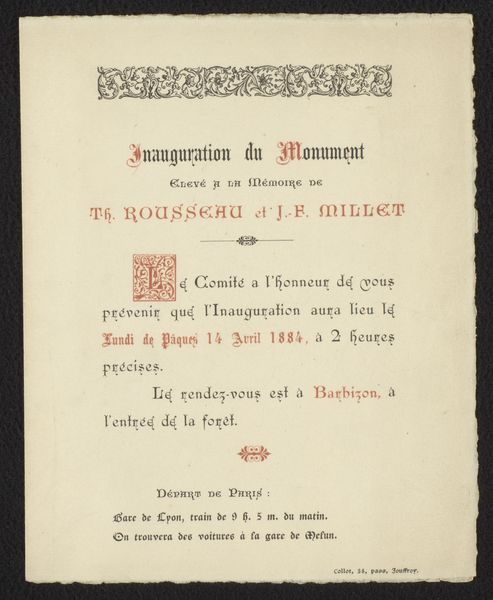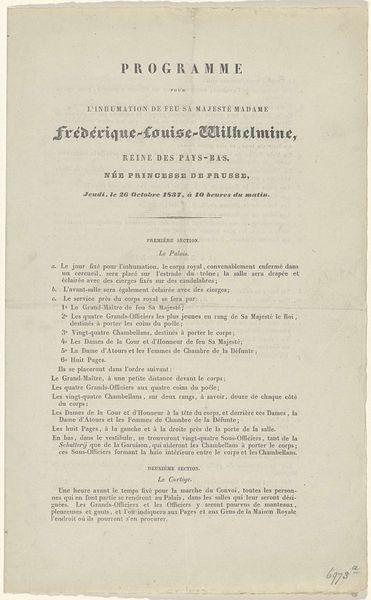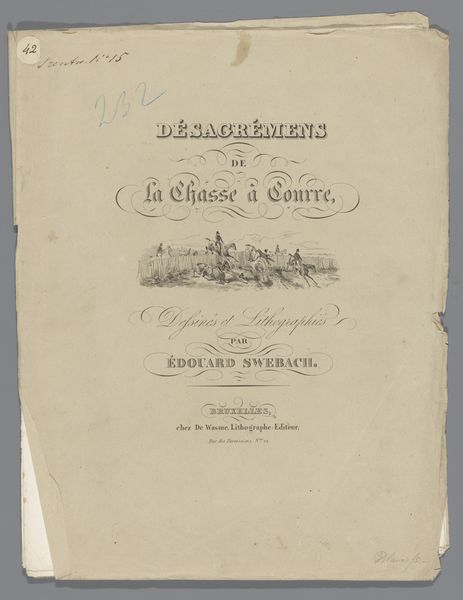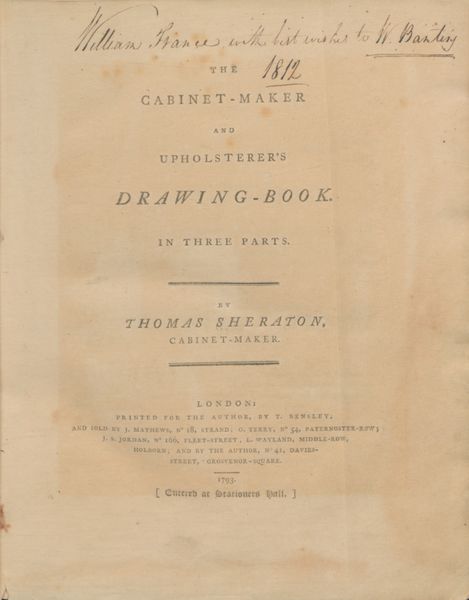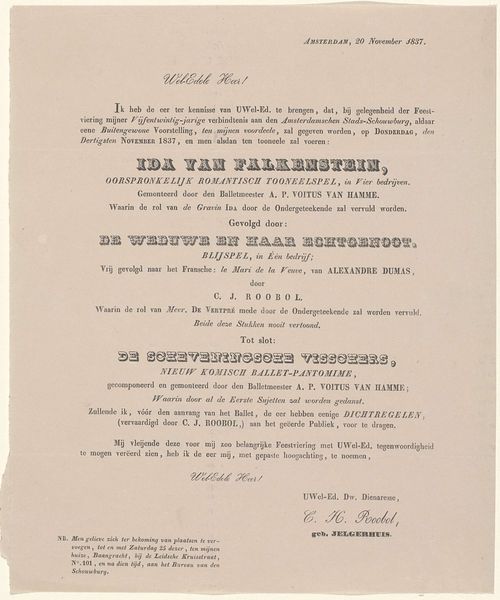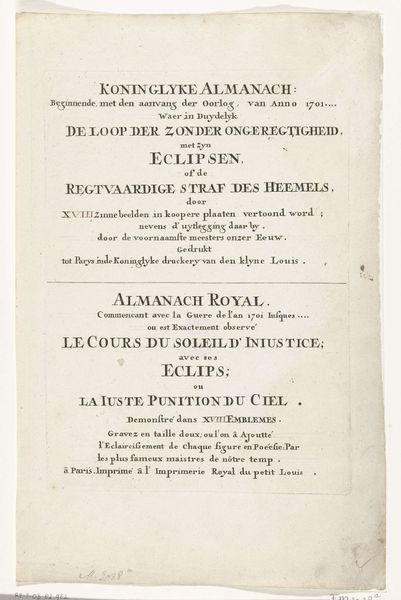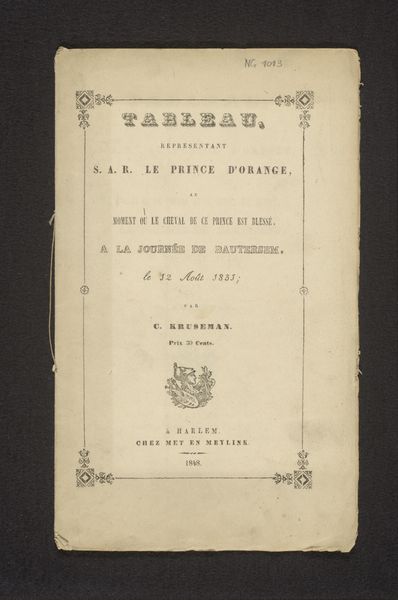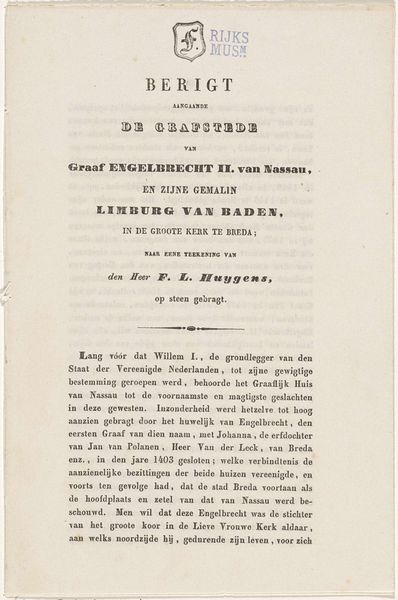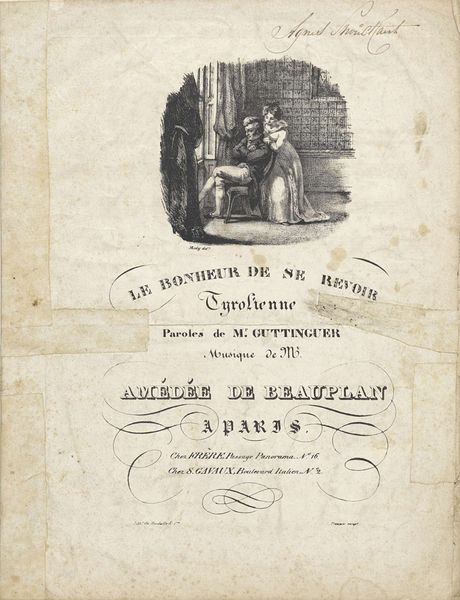
Uitgeversprospectus voor de serie platen van de aankomst en inhuldiging van Willem I in Brussel, 1815 1825 - 1826
0:00
0:00
lithograph, print, typography
#
lithograph
# print
#
typography
#
history-painting
Dimensions: height 208 mm, width 128 mm
Copyright: Rijks Museum: Open Domain
Curator: This lithograph from 1825-1826 is a publisher's prospectus, designed to drum up interest in a series of prints depicting the arrival and inauguration of William I in Brussels back in 1815. The artist associated with it is J.L. van Bever. Editor: It has such an understated, utilitarian feel, almost like a broadside or public announcement. The typography itself is very much a feature of the design. Curator: Indeed. The typography *is* a key element. It speaks volumes about the socio-political context— the desire to disseminate imagery of power and authority in a readily reproducible and accessible form. Lithography, as a process, enabled that like never before. Editor: Absolutely. The prospectus itself acts as a sort of marketing strategy of the era, aiming for a wide circulation that underscored the King's importance. Who would the artist have been, I wonder? Curator: According to the text here, the collection includes work based on drawings done by the king himself, supplemented by depictions of significant events such as the Battle of Quatre-Bras and Waterloo, composed and drawn by Madou and intended for engraving. Van Bever, the editor, is positioning this series within a history painting tradition while actively courting bourgeois and even aristocratic subscription, making art a direct tool of statecraft and kingly legacy building. The reference to "ordres du Roi" suggests some serious oversight and backing from the King himself. Editor: So it is explicitly stated that these scenes were done according to royal mandate... fascinating to look at what types of labour and making are promoted and seen as beneficial for the Netherlands here! Also, the scale sounds enormous! Twenty-eight inches wide by eighteen inches high would've required skilled craftsmanship. Curator: Precisely! This prospectus operates as a declaration that monumental moments in a nation's history warrant artistic celebration. The closing line seals it – suggesting it would create a beautiful record for everyone. The material and textual elements conspire to convey a potent political message of enduring monarchical power. Editor: A mix of fine art and accessibility to underscore its political power... A well-made piece of propaganda! Thank you, curator, for drawing out such context. Curator: And thank you, editor, for keeping our feet on the ground with production.
Comments
No comments
Be the first to comment and join the conversation on the ultimate creative platform.
